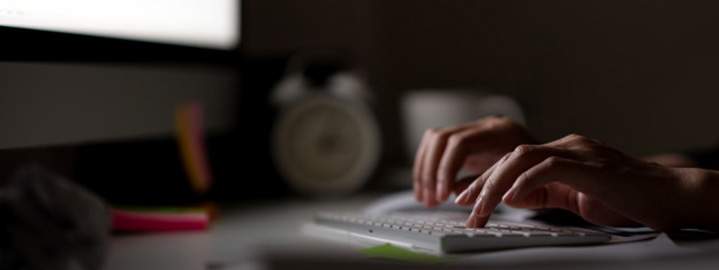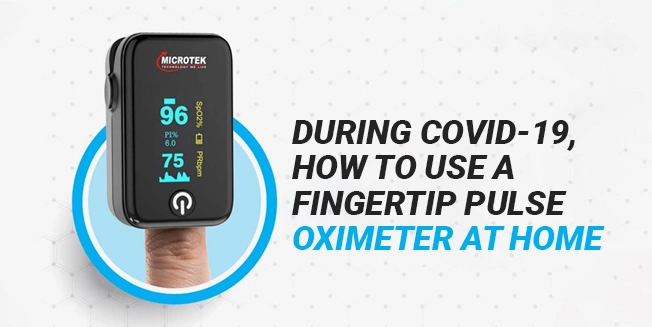
August 7 , 2021

The second COVID-19 outbreak wreaked havoc in India, infecting millions of people and killing tens of thousands. It’s natural for people to feel panicked during a crisis, but this only makes things worse for the victims. As a result, it’s best to avoid panicking in such a situation and instead prepare to fight the infection with the right instruments. One such doctor-recommended device is a fingertip pulse Oximeter.
CLICK FOR TECHNICAL INFORMATION
However, owning this technology is useless if the user does not understand how to use it.But fear not: this blog will show you how to operate a pulse oximeter, what affects the oximeter reading and how to keep a pulse oximeter in good working order.
What is a Pulse Oximeter?
Pulse oximeters are little clamp-like devices that measure the oxygen saturation level in human bodies, also known as SpO2. This little instrument can also measure heart rate and oxygen saturation at the same time. Pulse oximeters are commonly used by doctors, clinics, and hospitals.
With the onset of COVID-19 infection, doctors have advised that every home keep a pulse oximeter on hand to detect a sudden reduction in blood oxygen levels. Anyone can benefit from knowing how to use a pulse oximeter to minimise health concerns.
What Are the Benefits of Using a Pulse Oximeter?
A pulse oximeter’s primary function is to determine the level of oxygen saturation in our blood. As a result, medical professionals utilise pulse oximeters at clinics and hospitals to identify whether or not a patient need oxygen support.
As a result, doctors and health experts advise that every home have a pulse oximeter and learn how to use it. The reason for this is that COVID-19 infected people have breathing problems, and their blood oxygen levels decline. Hypoxemia is a condition in which oxygen saturation falls to dangerously low levels, often resulting in death.
In patients who do not have symptoms such as breathing problems or pneumonia, hypoxemia is usually undetectable. People may die from a lack of oxygen in the body. Knowing how to use a pulse oximeter at home can save your family from suffering from hypoxemia.
Common Cases that Require an Oximeter
Here is a list of common situations in which a pulse oximeter is required, and patients who know how to use a pulse oximeter can avoid any potentially dangerous situations:
Working of a Fingertip Pulse Oximeter
Learning how oximeters work is just as important as knowing how to use one. To monitor blood-oxygen saturation, or SpO2, pulse oximeters are frequently attached to the patient’s finger, toe, or earlobe. Microtek’s oximeter can also monitor heart rate, blood flow, and other factors.
You may notice that a pulse oximeter emits a red beam after turning it on. This red beam is passed through the blood vessels of the patient’s finger, earlobe, or toe by the device. The oximeter tracks changes in blood cell light absorption and displays the results on a tiny screen.
What is the best way to utilise a pulse oximeter?
Before you can rely on the oximeter’s readings, you must first learn how to properly use a pulse oximeter, and the first step is to learn how to put one on. While placing the oximeter clip on the patient’s finger or toe, you should look to see if —
Pulse oximeter readings are affected by a variety of factors.
To get accurate readings on the pulse oximeter, keep a few things in mind while monitoring blood oxygen saturation. The oximeter may fail to provide an accurate value in certain circumstances. Even those who are familiar with pulse oximetry may be perplexed. So, what factors can affect the reading of a pulse oximeter?
How to Care for an Oximeter in a Safe Way
It’s not enough to know how to use an oximeter. It’s also crucial to keep a pulse oximeter in right conditions. A pulse oximeter can survive a long time and provide accurate data if you follow a few simple measures. These are the steps to take. –
To sum it up
It is unnecessary to emphasis how important it is to have a pulse oximeter at home and how important it is to know how to use one. COVID-19 infected people should take it, according to doctors. Patients can use the fingertip pulse oximeter to see if their condition is deteriorating or if they need to be admitted to the hospital.
It is new essential in your first-aid kit. To know the specifications, technicalities, oximeter price and/or any doubts related to the product, feel free to leave the comment in the comment section and we will get back to you at the earliest, till then STAY SAFE!!